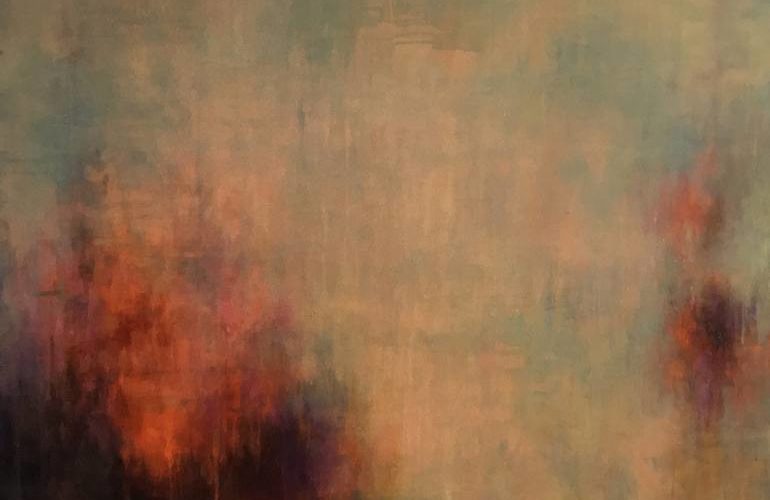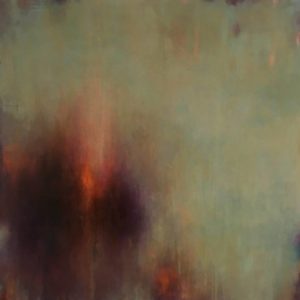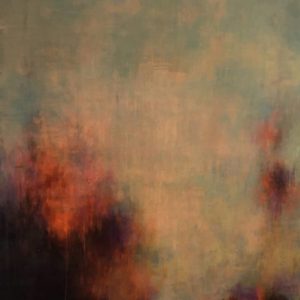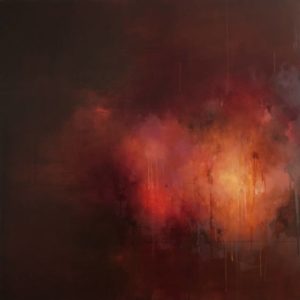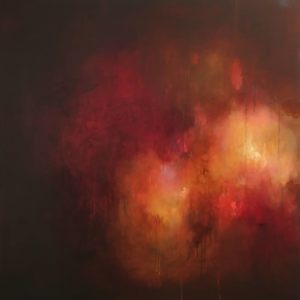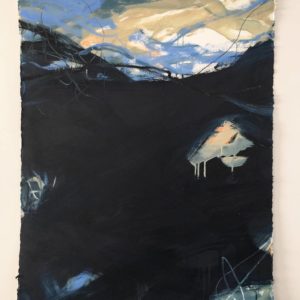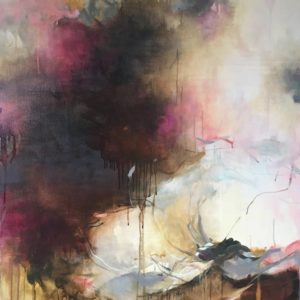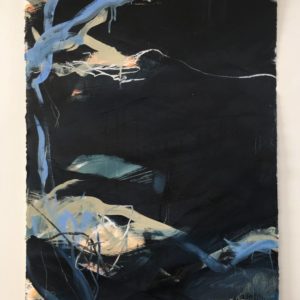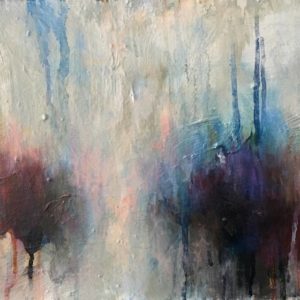The Others
 Meet the Others: Abigail Bowen
Meet the Others: Abigail Bowen
The Game Changers. The Rule Breakers. The Innovators. Discover some of the fantastic emerging talent showcasing their work at The Other Art Fair.
British painter Abigail Bowen tells us about her practice, how her paintings shifted from figurative to creating abstracts and how isolation during the coronavirus has altered her latest series.
Tell us about who you are and what you do.
I am an abstract painter. I live in Brighton and work from the attic of my home surrounded by the seagulls and the sky.
What are the major themes you pursue in your work?
I like to say that I paint ‘The Edge of The Rainbow’. The term comes from Donna Tartt’s novel, The Goldfinch, as she describes a space that sits just beyond reality, where ‘all beauty, magic and art exist’. But equally, the rainbow analogy encompasses grief, regret and longing. It’s this concept of melancholic beauty used to describe emotional experience that I endeavor to recreate with oil on canvas. It feels as though I’m trying to capture ghosts – hazy, amorphous shapes that float in and out of the canvas. My method uses lots of thin, runny oil paint and I like to think that as I flood each gentle layer on top of each other, light and air is captured in the painting, bringing it to life.
How did you first get interested in your mediums and what draws you to them specifically?
I have always experimented with oil-based mediums. When I was an art student, most of us were influenced by Anselm Kiefer and I would buy all the really noxious bottles and jars of stuff from hardware shops. I would let bitumen, linseed oil and furniture wax melt, stick and pool across the surface – mostly these pieces looked beautiful but were hopeless in the long term as they never dried. As I refined my process and could afford ‘proper’ art materials it became pretty clear that my heart remained in the beautiful smell, viscosity and luminosity of oil paints. Combined with this, is the rich history of oil painting itself. My work is not progressive, challenging or ‘cutting edge’ and so using oils helps create something I hope people see as timeless in some way.
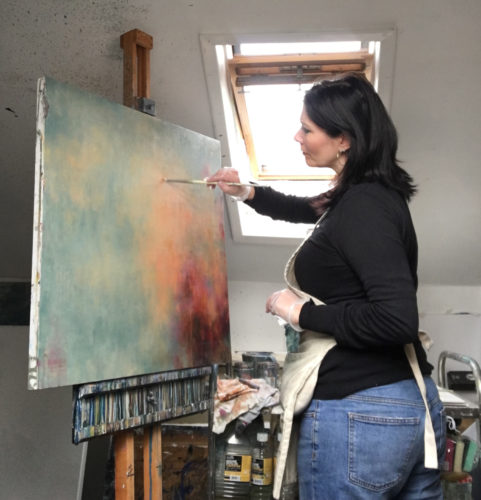
How has your style and practice changed over the years?
I had a long break from painting whilst I had my children and ran a business with my partner. I only picked up a paintbrush again in 2014. At first, my practice was figurative as I re-learnt my skills mainly in the life room. After a few years and following the deaths of my father and my friend Clare, followed by the diagnosis of my father-in-law with Alzheimer’s, I realised that I no longer wanted to paint what I saw, but needed to express what I felt. Eventually I discovered ‘painterly abstraction’ was the language that could help communicate what I wanted to say about grief and loss. Over recent years my work has become softer and more muted with the absence of any hard edges. I want to explore this further, hoping to create more presence with less form and shape.
Can you walk us through your process? How long do you spend on one work? How do you know when it’s finished?
Most paintings start with a word, a piece of text or sometimes a visual from a film or piece of music. I will start to imagine how that lyric or dialogue would look in painted form. Sometimes, it’s just a feeling or a mood or a particular colour. As the painting progresses (usually in a series of 4 – 6 pieces at a time) these initial influences may morph and fade into something else, but the painting is only finished when titled as I want the viewer to know that each piece is actually rooted in a real experience. Its important to me that they are not simply decorative objects but also have a depth of meaning and emotion. On average, a successful painting will take about 8 weeks; but in that time, I will work on 4 or 5 simultaneously. And hopefully end up with 3 that I am happy with.
What series or project are you working on next?
That is interesting because the Covid-19 crisis derailed me for a bit. Initially I was quite happy as I was close to finishing a body of work and so let myself slow down and I enjoyed completing those without the pressure of a deadline. After that I started a new collection of 6 canvases, but last week I completely painted over the lot, as they just weren’t feeling right anymore. This week I have started again, it’s just at the early stages so we shall see what happens, but I don’t think I will be making any dramatic departures. It feels right to explore familiar territory at the moment.
What is the best advice given to you as an artist?
Use cheap brushes and quality paints. And it’s true; there is nothing worse than floundering around with poor pigments. It’s frustrating, it takes longer, and you use more paint for a worse result. That expensive tube of Cadmium Red is worth every penny, trust me.
Shop artwork by Abigail and other trailblazing artists at The Other Art Fair’s Online Studios.
Introducing The Other Art Fair Online Studios, a new online platform offering art lovers around the world access to over 800 Fair artists. The Online Studios will keep our community feeling inspired, engaged, and continue to spread joy through art.
